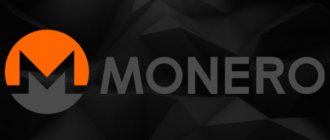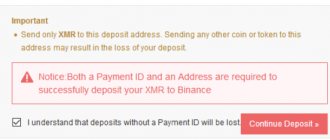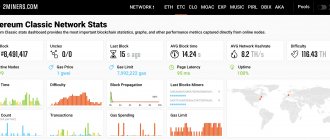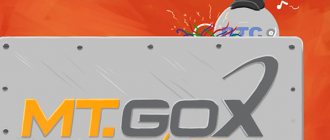Due to the nature of the altcoin, some crypto exchanges refused to list it. Are there any advantages to the XMR token, who uses it and in what areas can it be used for good?
In early June, the US Federal Bureau of Investigation was able to recover approximately $2.3 million of the $4.4 million that pipeline company Colonial Pipeline paid the hackers in ransom. The funds were transferred to the attackers’ crypto wallet in bitcoins, thanks to which they were traced.
More sophisticated criminals are now demanding ransom in another coin, Monero, rather than in Bitcoin, warns Rick Holland, chief information security officer at Digital Shadows. “In the case of Monero, [the blockchain] hides the wallet address, the transaction amount, the name of the counterparty - this is exactly what dishonest players want,” explains Fred Thiel, former chairman of the board of directors of the large European cryptography company Ultimaco.
Bitcoin operates on a public blockchain, transactions in which can be tracked in real time using various services, blockchain browsers, for example, Blockchair.com or Blockchain.com. This means that the movement of funds in Bitcoin does not go unnoticed. In addition to the addresses used in the transaction, the payment amount also remains public. With Monero, everything is different - it runs on an anonymous blockchain.
Creators
The team strives to make working with cryptocurrency easier in a rapidly changing technology climate. Users are shown the way to private and cryptographically secure infrastructure and storage systems.
Large-scale collaboration on the code is carried out through the public resource getmonero.org, its organizers: Ricardo “fluffypony” Spagni, Francisco “ArticMine” Cabanas, Othe, Smooth, Tacotime, Luigi1111, NoodleDoodle. They came up with the rules for operating the Monero cryptocurrency network. At the end of 2014, Spagni created and launched the MyMonero e-wallet, which is still considered the most secure Monero storage facility.
The serious work of translating the block chain to the LMDB library allowed Monero utility programs to fully work on computers with little RAM.
Features of the Monero cryptocurrency
Monero was created using revolutionary technology, as many developers of other cryptocurrencies have recognized. Not only senders remain hidden, but also recipients, amounts and transaction histories. Three key points demonstrate the main features:
- Decentralization - no one controls the currency alone, there is no center. There are no regulatory servers or regulatory bodies, the Monero network is regulated by an open network society. Therefore, decisions on the development of cryptocurrency, the introduction of new rules, even developer registration logs are openly published.
- Security – Monero cryptocurrency provides a high level of security; none of the existing digital currencies provides greater protection.
- Confidentiality – user anonymity is placed above all else. To achieve this, the Monero team has implemented its own developments, the main ones of which are ring signatures, private addresses and the interchangeability of cryptocoins. Initially, Spagni focused on the anonymity of cryptocoins. By 2014, all Bitcoin transactions could already be tracked by going through the chain of confirmed transactions. Now no one doubts the low degree of anonymity of the first cryptocurrencies.
Comparison with Bitcoin
The problem with public Bitcoin transactions has become obvious. Bitcoin is not anonymous and never has been. By owning even one digital coin or part of it, you become a member of the network. Blockchain technology allows you to track everything that happens on the network, that is, it becomes possible to track all transactions. Passing on a Bitcoin wallet address to receive or send a payment opens the door to a “secret room” of storing completed transactions.
The owner of Bitcoins could not be sure of the confidentiality of information about his transactions for the purchase and sale of goods and services, transfers and stored amounts. Online exchange resources suggested using a one-time e-wallet address. It is recommended to indicate it as details for receiving money in a real wallet. This temporary address is generated by the exchange for one transaction only. After the successful completion of the transaction, it is destroyed and the connection with the real wallet is interrupted.
This approach is good for single payments; for those who sell goods or services for bitcoins or other coins on a regular basis, temporary addresses will not save them.
Fungibility
Monero's goal is to create a network of fungible currencies. What is fungibility and why is it so important?
Fungibility is the most important property of any currency. This property makes it possible to 100% exchange one unit of currency for another. There should be no difference here. Each coin must have the same value.
On the Bitcoin network, every transaction can be tracked. This can create problems when receiving transfers from unfamiliar sources, as well as in the future when trying to spend these funds. You may be charged with crimes in which these funds were used. This significantly underestimates the cost of such “dirty” products. Another problem with tracking transactions is that others can find out your balance or determine how you spend your funds.
However, you can try to cover the tracks of your transactions. This technique is called “mixing” and can be done in a variety of ways. Sometimes centralized, sometimes decentralized, but there is always a chance to see that certain coins have passed through the mixer. Using this technique somehow leads to problems, because “dirty” coins are usually used for mixing. Optional privacy does not solve the problem of currency not being fungible.
You can try to cover your tracks, but if you try to mix your coins using “coinjoin” or any other “anonymizer”, then these transactions will still be flagged as “potentially suspicious” activity, since it is immediately obvious that the coins were mixed, even if you yourself remain anonymous.
So don't confuse anonymity with fungibility. Mixing technology only works if it is the default for all users. If everyone is always mixing transactions, then no one can say anything specific about the data on the block chain.
Benefits of Monero
There are no such problems on the Monero network. The team's unconventional approach is to use Ring Signatures and Stealth Addresses for fungible Monero coins.
The mechanism of closed addresses means that a participant has one public address that can be transferred to someone, all others are closed or private. The Monero address subsystem uses two such keys: viewkey and spendkey.
A private spendkey is used to sign transactions, just like Bitcoin. A private viewkey will help you view transactions associated with your Monero address. Ring signatures hide the real inputs of transactions, leaving no way to determine the ins and outs of the links in the block chain. The mechanism uses the CryptoNote protocol, it is simple and complex at the same time. Without prior preparation, groups of equal users (rings) are randomly created, and only one of the group signs the action so that later it will be impossible to find out who exactly signed.
RingCT Confidential Transactions
Ring confidential transactions are a new signature system proposed by scientist Shen Noether in the MRL-5 paper. You can find its first edition in Ledger magazine. This signature system is based on Gregory Maxwell's research on confidential transactions, but adapted to work with ring signatures.
This technology allows users to hide transaction amounts. And it is the “final piece of the puzzle” for complete anonymity on the Monero network. The technology also addresses some edge cases that could compromise Monero's privacy. RingCT was activated on the Monero network on January 9th, 2016. RingCT was initially optional, but in September 2022, after a planned hard upgrade, RingCT technology in Monero will become mandatory, with no way to bypass it.
Disadvantages of the Monero cryptocurrency
As usual, the weaknesses are associated with the main strengths:
- The unique cryptocurrency code creates an information block of enormous size. Its volume is many times larger than blocks of other coins, which does not prevent Monero blocks from being created faster.
- Block size affects how long it takes for transactions to be confirmed. Since mining is carried out on the CPU and GPU, the system runs slower, but without overheating.
- The deep anonymity of cryptocurrency has become the reason for its use as a means of payment for dubious transactions. The coin's widespread use on the dark side has resulted in a lack of community acceptance for it.
Simplicity is not what it seems
It was described above that anonymity simply breaks down. In some ways this is true. But in fact, to establish a wallet number using a public key, you need to have good programming skills. But really, why do you need this? Most likely, you are simply interested in your friend's wallet. So why not just ask, instead of going into all the details?
Have fun using Monero!
Where to buy Monero (XMR)
Now XMR is one of the second ten largest cryptocurrencies by capitalization. You can purchase a coin on more than 80 top cryptocurrency exchanges:
- Bitfinex
- HitBTC
- Binance
- Poloniex
- Kraken
- Bittrex
- Exmo
If you want to buy the Monero (XMR) cryptocurrency, but don’t know where to start, then we have instructions on how to buy any coins and altcoins for rubles and a list of the best cryptocurrency exchanges.
2017 was a successful year for the cryptocurrency, the price of Monero rose from $10 to $350. Prospects for 2022 promise smoother growth of 3-6 times. Mining promises to be successful, but not to the same extent as last year.
Digital currency vulnerabilities
Mining Monero using a GPU is inefficient, as it requires a significant amount of memory, approximately 8 times the size required for Bitcoin operations.
The anonymity of transfers in Monero is not yet 100% guaranteed. Hypothetically, an attacker who manages to take over most of the network could gain control of some transactions.
Mining Monero
You can mine XMR cryptocurrency on your computer. Blocks are calculated on the central processor, video card, or a combination of CPU and GPU. The currency was initially based on the algorithmic scheme CryptoNote, then CryptoNight, which proves the execution of PoW work, which imposes requirements on the amount of RAM of the computing device. Cryptocurrency creators regularly make changes to the mining algorithm, which hinders the use of ASIC devices. Thus, they deliberately support the decentralization of the network.
Cards from two well-known brands are suitable for mining: AMD (4ХХ, 5ХХ, R9) and Nvidia. The best hashing rates are achieved with software designed for specific video card models. Intel i5 or i7 processors are suitable; a budget option would be an AMD RX 570 video card with 4 GB of RAM.
Important: do not buy equipment that has been used by miners; its resource can be considered completely used up.
The process of downloading the selected program, setting it up and the wallet, and starting mining itself will take no more than 20 minutes.
A simplified version of Monero mining can be considered participation in the general mining process. Collaborative mining pools are organized on the network, where participants who only have low-power equipment in their hands unite for profitable cryptocurrency mining. The resource moneropools.com will help you analyze the information and choose the appropriate pool. Its visitors are advised to support small pools to maintain the decentralization of the cryptocurrency.
Monero Wallets
Cold and hot, online and paper - they all allow you to safely store, receive, send and exchange the Monero cryptocurrency. Access to your personal XMR wallet is open 24/7, all you need is a computer or smartphone. Monero Web Wallet is a web wallet for XMR. It is managed and owned by Riccardo Spagni, who is the lead developer of Monero. The wallet works like any account. You create an account and log in online so that you have access to your funds. MyMonero only encrypts your keys and stores the data on its servers. But he does not have access to your funds.
Monero Desktop is a desktop “wallet”, an official client of which it is a full-fledged node. It can also be downloaded from the official Monero website. USBCOLD WALLET - a “cold” wallet serves to ensure security. It will take 10 minutes to install and configure it. This is by far the safest place to store Monero coins.
MoneroAddress.org offers an offline wallet generator. There you can create a new “wallet” off-line. It is self-contained and does all the necessary calculations locally, so it is suitable for creating a new "wallet" on a computer that is not connected to the network. After going through all the steps, you can create a Monero wallet without risking your keys, and write down all the generated details on any medium.











